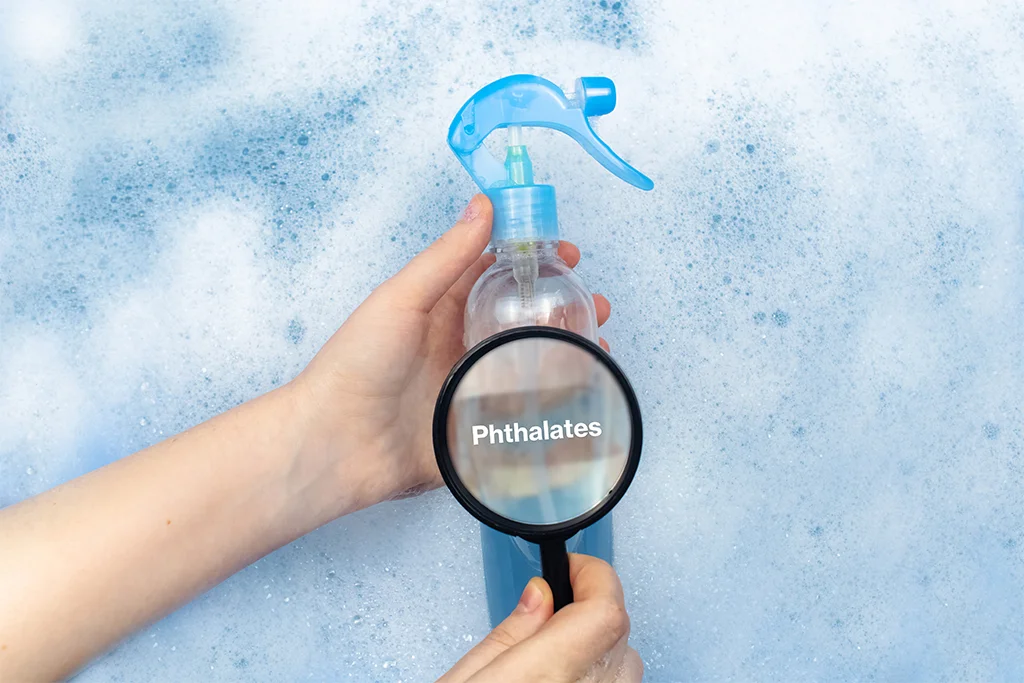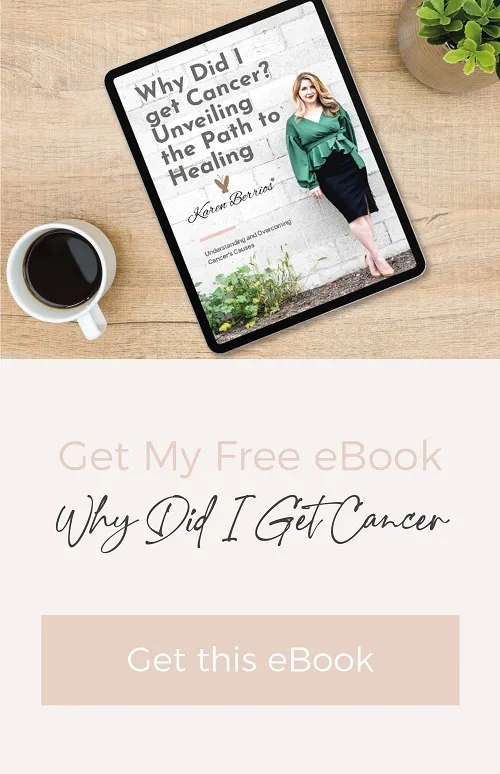

Top Endocrine Disruptors And How To Avoid Them
Top Endocrine Disruptors. Do you often believe that everything sold on the shelf has your best interest at heart? There is a phenomenon in our society that… if the grocery store has it, Target has it, Walmart has it, etc… It’s completely safe.
But this is just not the case. There is something that lurks in plastics, foods, beauty products, home products, and more that can have a serious impact on our health.
That is endocrine disruptors. In this article we will focus on what the top endocrine disruptors are, why it matters, and solutions to this problem within each one listed. In my final thoughts, I’ll let you know what was the hardest for me personally to give up.
Let’s get into it!
What are endocrine disruptors?
Endocrine disruptors (EDs) are incredibly interesting chemicals because they are powerful enough to mimic hormones.
By doing so, they will actually bind to hormone receptors. This will create a response that can be even more powerful than the original, natural hormone. Other times, it can create a response that is LESS powerful than the original hormone. OR, it can create a completely DIFFERENT response than the original hormone. This is terrifying!
What then happens is that EDs can radically change hormone synthesis (or rather, hormone creation) and they can change the transport, the binding, and the breakdown of reactions.
We should note that even a tiny amount can have an influence. Have you ever see EDs measured by parts per trillion? Yes, trillion! That is just how small the ED has to be to make a difference in the body.
Why does endocrine disruption matter?
Our hormones and the system they live within are crucial to our body’s functionality. It is crucial to our health.
When our functions are changed by EDs, the following can happen:
1. An overload of oxidative stress.
2. We can experience sensory impairment and social response problems (this can especially happen at an early age.)
3. Men can experience testicular function changes and even testosterone changes in general.
4. There can be an early onset of menarche, which is the onset of a girl’s first menstruation
5. An altered metabolism
6. EDs getting stored in fat cells
7. Disrupted immune function
8. Disrupted bone health
9. Disrupted mental health
10. Disrupted cardiac functions
Where are most Endocrine Disruptors found?
It is so unfortunate that EDs are everywhere. It is something that, once you become conscious of it, you’ll need to be aware and double check all the time. Fortunately, once you know, you know! And then you can make informed decisions for yourself and your family.
After the age of industrialization, more chemicals were produced. And more and more are produced each year! These chemicals make their way into everyday environments and products.
Endocrine disruptors are found in:
- Food
- Pharmaceuticals
- Cosmetics
- Beauty care products
- Hygienic care products
- Perfumes
- Pesticides
- Plastics
- Soil
- Water
The last two are especially sad.
Top offenders of Endocrine Disruptors
BPA aka Bisphenol A
BPA stands for Bisphenol A. In scientific terms, BPA structure is C15H16O2.
In layman’s terms, BPA is a chemical. Where you are going to find BPA is usually in plastics and cans. And not just one time use ones either– think of your plastic tupperware! Or aluminum cans you might keep to store things in. That is typically where BPAs can lurk.
BPA can act as a synthetic estrogen which has been used to produce plastic bottles, baby bottles, and the epoxy resin which lines many cans. It is truly crazy how easy it is to find BPA. It seems to be everywhere. It is even found in some medical devices.
BPA has been linked to breast cancer, prostate cancer, and even metabolic disorders. A 2015 study shows the BPA chemical has the potential to actually INTERACT with estrogen receptors (this is so scary) and can affect fertility in both men and women. Yes, men need to be weary of BPAs as well when it comes to fertility. It cannot and should not only be placed on the woman.
Something we can do is try to avoid plastic and aluminum as much as possible. Always reach for class and paper. If you ARE using plastic, make sure to never HEAT that plastic.
Phthalates
Phthalates are another one to worry about. They are one of the most commonly used chemicals in the world. They are found in products that many of us come into contact with daily.
Things like personal care products, food containers, detergents, pharmaceuticals, vinyl flooring, wall coverings, lubricants, and oftentimes toys and trinkets.
It is so tough to avoid this chemical completely but we should still be aware of the dangers.
Phthalates can impair male reproduction and sperm count, they can cause asthma, insulin resistance, and even low birth weight— among the common symptoms we see from other EDs.
A big thing you can do to avoid this chemical is to stay away from fragrance, avoid buying plastic toys and trinkets, and eat organically.
UV Filters
UV filters are a complex one. It is a known fact that ultraviolet solar radiation from the sun is an environmental risk factor. That is why sunscreen is so encouraged, and on a daily basis! Sunscreens are classified as cosmetic commercial products that combine both active and inactive ingredients. Unfortunately, some of these ingredients can cause big health concerns as they can be true endocrine disruptors.
Some of these to look out for are the following:
1. Oxybenzone
2. Benzophenone-1
3. Octyl methoxycinnamate
4. 4-methylbenzylidene camphor
5. PABA, OD-PABA, Et-PABA
6. 3-benzylidene camphor
There are others, but this is the most common list.
In the journal of endocrinology and metabolism, they say this about UV filters:
“In vitro and in vivo studies have demonstrated their ability to show oestrogenic/anti-oestrogenic and androgenic/anti-androgenic activity. Many ingredients affect the oestrous cycle, spermatogenesis, sexual behaviour, fertility and other reproductive parameters in experimental animals. Their presence in aquatic environments may reveal a new emerging environmental hazard.”
Stick to non-toxic sunscreens, often time physical or mineral sunscreens are best.
BHA and BHT
BHA and BHT are interesting chemicals. BHA (butylated hydroxyanisole) and BHT (butylated hydroxytoluene) are heavily used in our modern day food industry. They are used as preservatives and this is mostly to prevent oils from going rancid, or oxidizing. The reason oxidation in foods is a problem is because it can affect the flavor, color and also order. Scientists believe it can also alter nutrient density as well. (There are also scientists who believe BHA and BHT have antimicrobial properties too, but this can be debunked.)
The problem is that BHA and BHT can bioaccumulate in the body and can begin to wreak havoc once it gets to a certain level.
Integrative medicine doctor, Dr. Taz, talks about the harmful effects of BHA and BHT and gives us a healthier alternative:
“Recognized as generally safe by the FDA, these two chemical preservatives raise concern in other health organizations. The National Institute of Health, for example, anticipates BHA to be labeled a human carcinogen. It is also thought to cause cancer. And here’s some food for thought: BHT is also used as antiviral medication to treat herpes and AIDS. It works by damaging the outer layer of a viral cell before it can multiply, ultimately destroying it. As a nutritionist and a parent, it’s hard to deny the harmful potential of BHA and BHT; however, there is a natural alternative to these scary chemical additives. Vitamin E keeps foods as fresh as BHA and BHT but without the side effects.”
We should look for foods that use Vitamin E whenever possible.
Dioxins
These chemicals are a result of industrial practices, both from the start and also modern day.
They are usually produced through burning trash and bleaching paper pulp. Most of us can say we don’t generally come in contact with improperly-burning trash and don’t bleach our own paper pulp, and so it seems as though exposure to dioxins wouldn’t be an issue. However, the chemical is found almost everywhere in all corners of the world, and it breaks down extremely slowly. As a result, almost every living creature has been exposed to dioxins or dioxin-like compounds. A 2016 study showed some alarming results of high concentrations of dioxin on young children. Preschoolers who lived in areas with high dioxin levels showed problems with neurodevelopment, particularly in boys.
Avoiding Dioxins – this is something that is difficult to do. Dioxins are part of an ongoing industrial release into the atmosphere of the environment. Meat, fish, milk, eggs, and butter are the most likely to be affected by dioxins, so reducing consumption of these products can help reduce exposure to the chemical.
Atrazine
Atrazine is an herbicide that is used to treat corn in the United States. Because of its common and regular use as an herbicide, it is also frequently found in the water supply. Atrazine’s effects on the endocrine system are extreme. In 2010, it was first discovered that atrazine was capable of chemically castrating frogs. The herbicide induced a complete feminization of frogs, and effects on hormones were seen even at low concentrations. The hormone disruption isn’t exclusive to frogs, either. Researchers have seen the effects on many different species of animals. In humans, the widespread use of atrazine has been linked to preterm birth in pregnant women, which is a public health crisis.
Avoiding atrazine is tough but you can buy fresh, organic produce whenever possible. Even better (and if you have space) grow your own produce whenever possible! Buy a water filter for your faucet at home to remove as much of the pesticide as possible from your drinking water.
Final thoughts
I know how tough it can be to avoid endocrine disruptors. I remember going through my kitchen and tossing out plastic containers and starting to be mindful of the food that I bought at the grocery store. Sometimes I shop in bulk sections or I will make it a point to get my food at farmer’s markets, where I see there is often less use of plastic.
Another thing that was incredibly tough for me was to stop wearing perfume. I had a signature fragrance that was like putting on part of my uniform. For years, I loved the scent I put on each day. It made me feel like me. When I learned about all the endocrine disruptors in fragrance, I knew I could no longer do it. It was a sad day to toss out my perfume of many years, but I did it. What I ended up doing was experimenting with a ton of different essential oils. It took me a long time to find a combination that I really loved, but when I found it, THAT became my new uniform scent.
Small things add up to big things. I want you to feel empowered and know that you can make informed decisions for yourself and your family! Always work on detoxing your body on a regular basis, and do what you can to stay away from EDs. It is impossible to be perfect, but it is possible to make an impact even through a few small changes.
1 Comments
Leave a Comment

hey there
I'm Karen!
I have found my cancer journey to be a positive and profound transformational experience. I’m inspired to share my healing journey here, and trust you’ll find hope, encouragement and purpose as you discover the healing power that lies within you.
Join
The Mailing List!
By signing up for my newsletter, you agree with our Privacy Policy and Terms & Conditions.



God bless and thank you for all this great information!